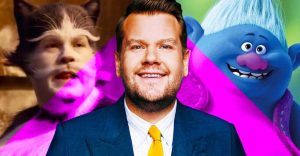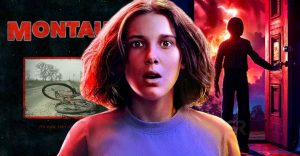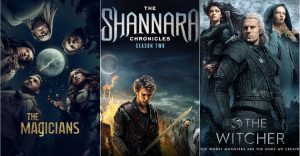Friends: 5 Ways It’s A Perfect Time Capsule Of The 90s (& 5 Ways It’s Not)

From 1994 to 2004, NBC’s sitcom Friends entertained households with its iconic characters, goofy scenarios and catchphrases that people still use to this day. The program was greatly honored, from receiving 62 Primetime Emmy Award nominations to being listed in the Writers Guild of America’s 101 Best Written TV Series of All Time.
The show often served as the perfect commentary on the 1990s, from the characters’ haircuts and clothing to their relationship etiquette. As such, it’s often viewed as the perfect time capsule of the decade. That said, in some ways, it utterly fails to portray the 90s with accuracy.
10 Perfect: The 90s Lingo

From “How YOU doin'” to “The Friend Zone,” Friends often made use of 90s lingo, which wasn’t difficult to do … since it was written in the 90s. Like The Simpsons, Full House and other relevant TV shows of the time, it featured lots of language reminiscent of the time, earning its spot in the time capsule.
Plenty of 90s slang and catchphrases, actually stemmed from the series, from “We were on a break!” and “Pivot!” to that famous hand gesture, which makes it an even better qualifier for a 90s time capsule. Friends didn’t only comment on 90s culture, but also guided much of it and even started a few trends.
9 Not: Those Nice Apartments

Friends often comes under fire for the sweet apartments that the characters were somehow able to afford on waitress and struggling actor salaries, and rightfully so: there really is no way that any of them would have been able to afford where they lived, making it a much less accurate representation of the 1990s than a show like Roseanne, which gave a much more accurate portrayal of the average person’s housing affordability.
Monica and Rachel’s apartment might have had the “whimsical” feel that the showrunners wanted it to have, but it also should’ve had a heftier price tag than anyone living in it could afford.
8 Perfect: The Conflict

Unexplained nice apartments aside, Friends truly encapsulated the conflicts between friends and many romantic partners during the 1990s. Joey’s attempts to secure acting gigs, Ross’s juggling his relationships with his ex and his current partner and the general search for a career of one’s dreams remain relevant to this day, but in 90s TV, these issues really blossomed into storylines — particularly in regards to the custody of a shared child, in Ross’s case.
Ben Geller-Willick-Bunch’s family is one of the best things about the show and it marks a time when family representation on television received a much-needed modern update.
7 Not: LGBTQ+ Representation

In terms of LGBTQ+ representation, Friends, like most shows at the time, deserves a “You Tried” award. It provided some LGBTQ+ representation, particularly in “The Puppy Episode” two-parter starring Ellen Degeneres, but in general, the show was as homophobic as any other at the time. Chandler hated his trans parent, Ross typecasts his nanny as gay, and the show happily made LGBTQ+ people into jokes, time and time again.
While this is reminiscent of 90s behavior, its depiction of actual gay people living their lives in the 90s fails, especially since several other shows, like Roseanne and the Golden Girls, got it right more often.
6 Perfect: The Outfits

From Monica’s adorable dress in the very first episode, complete with a sweater tied around her middle, to the guys wearing V-necks and striped button-up shirts, most episodes feature some kind of outfit that just screams 1990s.
Ross’s blue blazer over a bright yellow t-shirt was particularly reminiscent of the 90s and could even be seen in Saturday Night Live spoofs of the show, at the time. There’s even a bit of 90s grunge and checkered pants on the show. Some of the outfits on Friends stand the test of time, but most of them are completely taken from the 90s.
5 Not: Lack Of Diversity

While the lack of diversity in Friends was common among many TV shows of the 90s, it certainly wasn’t representative of the actual presence of any non-white people in America, particularly in New York, at the time.
Both the showrunners and actors have commented on their regret regarding the lack of diversity on the show, and thankfully TV is continuing to evolve, with much better representation today.
4 Perfect: The Body-Shaming

As often as people like to say that Friends hasn’t aged well, most of the offensive moments on the show still represent what it was like in the 1990s.
From scantily-clad women being made into “sleazy” jokes and the frequent fat-shaming of Monica to the running commentary from male characters who assume the have the right to make these statements, the show really highlights some of the most cringe-worthy trends of the 90s in the name of “morality” and “health” promotion, some of which continue to this day. Not everything that needs to be remembered is positive. Much of history helps us learn from our mistakes and avoid repeating them.
3 Not: Happily Ever After

How realistic of the 90s is it for two couples to form out of a group of six friends, or for those two couples to remain together? Unlikely, at best. Split or single-parent homes were common in the 90s, and given that the divorce rate is around 50%, it would have been much more realistic for these people to not only have met new people to fall in love with, but to also have not stayed together. Even remaining friends isn’t that likely after 10 years.
The makeup of the show isn’t very realistic, either. How many groups of six people are all gorgeous and funny? A 90s time capsule would require at least one grungy couch surfer and a funny friend who doesn’t look like a supermodel.
2 Perfect: The Hairstyles

Fans flocked to salons in the 90s to mimic the various hairstyles on the show, which, like the sitcom’s lingo, both reflected and contributed to 90s pop culture. It wasn’t only the time when Monica attempted to copy Demi Moore’s haircut, either. “The Rachel” was so iconic that it got its own name and practically its own cult following. People still continue to copy Jennifer Aniston’s hair to this day.
Monica’s bob could be seen on 90s singers like Natalie Imbruglia, while Rachel’s shaggier bob was beloved by cheerleaders across the country. Many of today’s beachy waves styled with texturizing spray are even reminiscent of Rachel’s famous “Rach-curl” look.
1 Not: Representation Of Parenthood

Friends was fantastic when it came to how it represented the many ways one could become a parent and have a family, from its depiction of surrogacy to single motherhood. But like most TV shows, it failed to really portray the day to day realities of parenthood in the 90s.
Much of this was to simply keep it entertaining. Any parent can confirm that as rewarding and beautiful as parenting can be, it’s also full of the drudgery and mundane tasks that come with keeping a young human alive. Even so, plenty of other TV shows at the time gave a better view of the full reality of parenthood, which has continued to improve on many sitcoms over the years.
About The Author
















